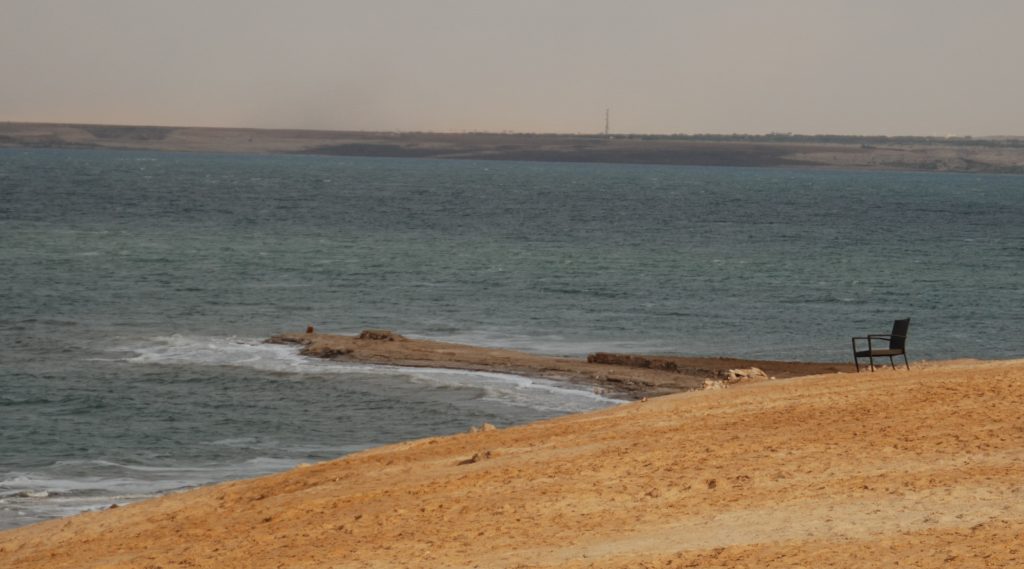
Growing up attending Sunday School at church, I had often heard about the Dead Sea in the Bible. I also learned that because of its high content of salt, no living creature could survive in it. What was even more fascinating is that, everything and anything that enters the Salt Sea floats and it is absolutely impossible to sink. When our travel group decided to name our Facebook page, they decided on Dead Sea Bobbers…such an appropriate title.
As I grew older, I learned about the therapeutic properties of the Dead Sea when I was gifted with an Ahava mud mask and salt bath. From this point forward, I began purchasing more of their products when I learned about the healing benefits for dry skin. I was so excited for the opportunity to purchase several of these items during my visit to Israel and stashed away a few more to bring home as gifts.
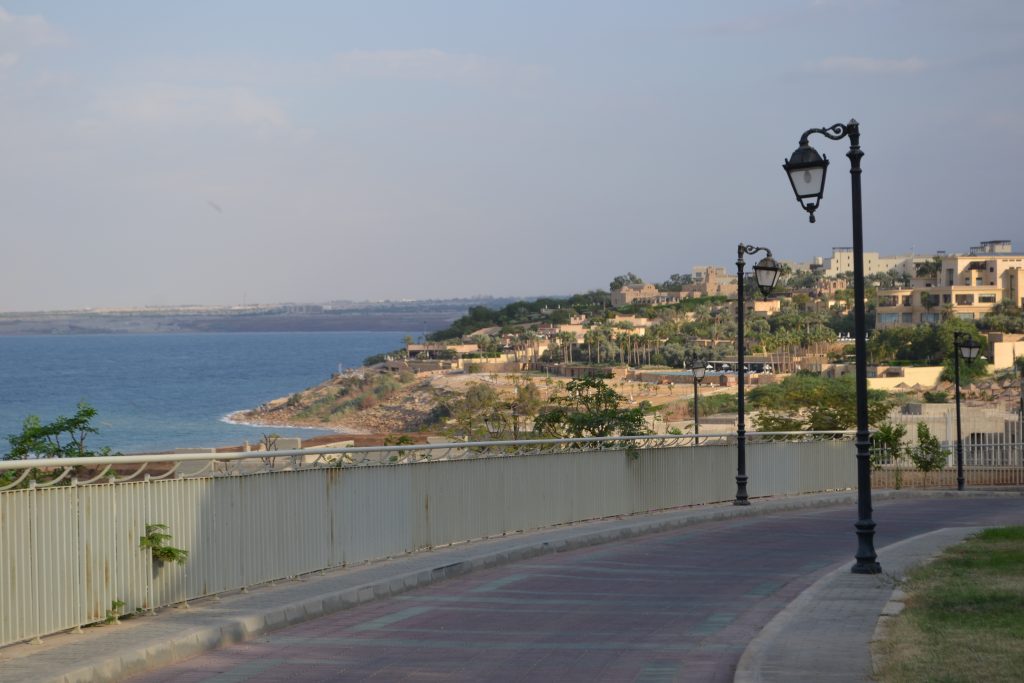
The Dead Sea, or Yam Hamelakh in Hebrew is the lowest body of water on earth at more than thirteen hundred feet below sea level. Lying in the basin of the Great Rift Valley, the term “Dead Sea” was first used in the second century BC and was known as the “Lake of Asphalt” to the Romans. Historian Josephus recalls an event where Vespasian took a group of Jews (most likely the Essenes of Qumran) who could not swim, restrained them, took them out on boats and threw them into the Dead Sea to test its buoyancy.
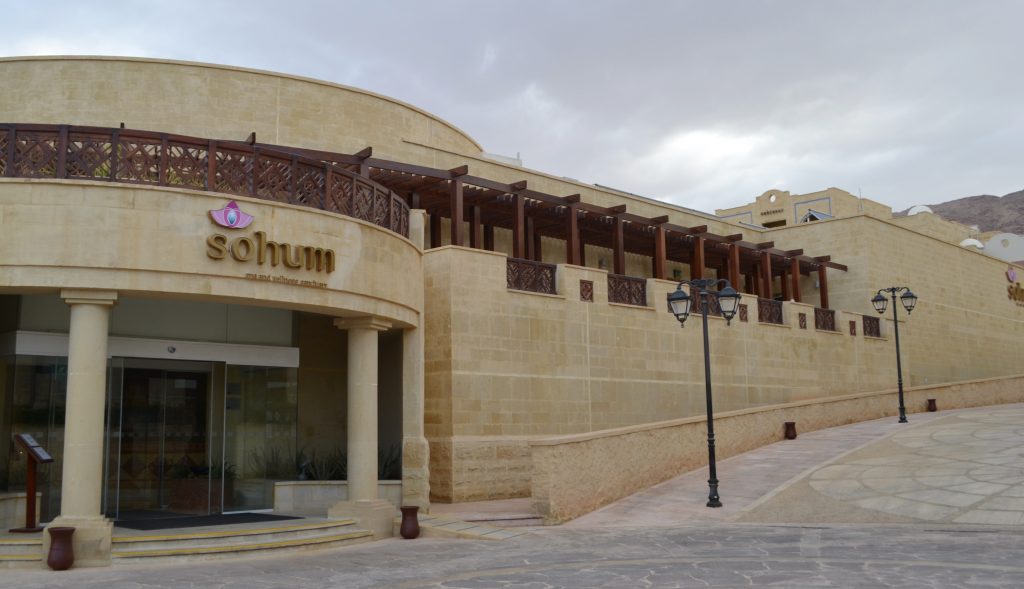
For three nights I stayed at the Crowne Plaza Jordan Dead Sea Resort & Spa. The property was exquisite with innumerable services including a luxurious spa. I couldn’t pass up the opportunity for a mud bath and signed up for an hour massage. While the Dead Sea is saturated with salt, it is actually alive with healing power and people come from all over the world in search of relief from their skin diseases.
Unfortunately, the cosmetic industry is taking its toll on the Dead Sea as it has shrunk forty feet lower over the past twenty years. The water level has dropped due to lack of rain, the man-made reduction of the runoff supply from the Sea of Galilee and fluctuating climate change.
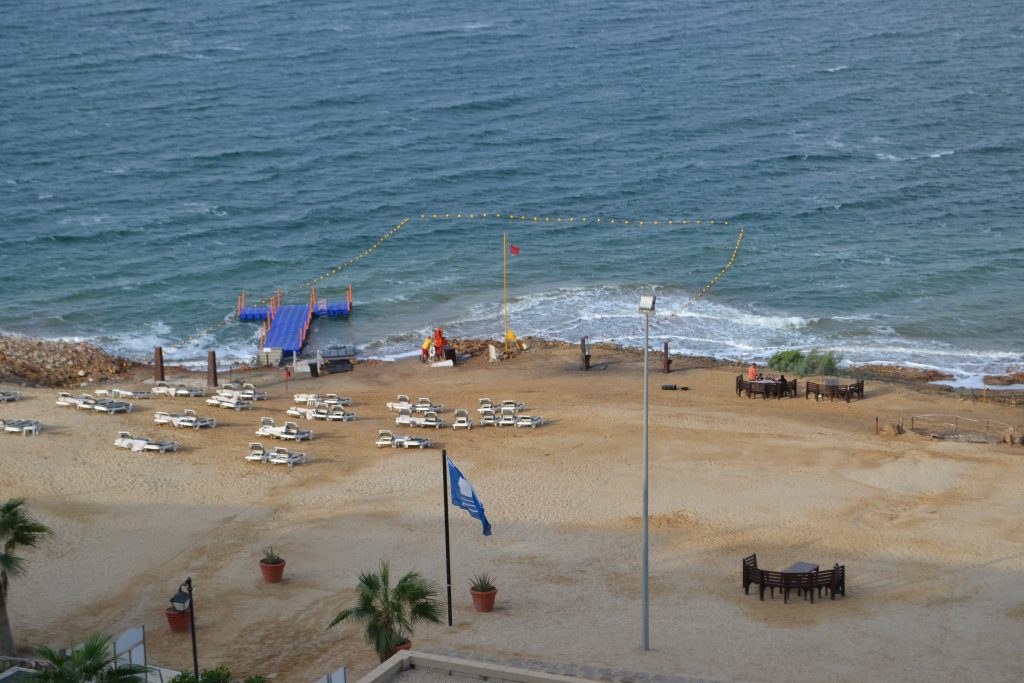
Along the coast, the resort had set up a floating deck and roped off area for guests to experience the wonder of the Dead Sea. This body of water is over thirty percent salt. A posted placard reminded visitors to keep the salty water out of their eyes and provided an eyewash nearby. The water of the Dead Sea is seven times denser than seawater and can be dangerous if swallowed or inhaled.
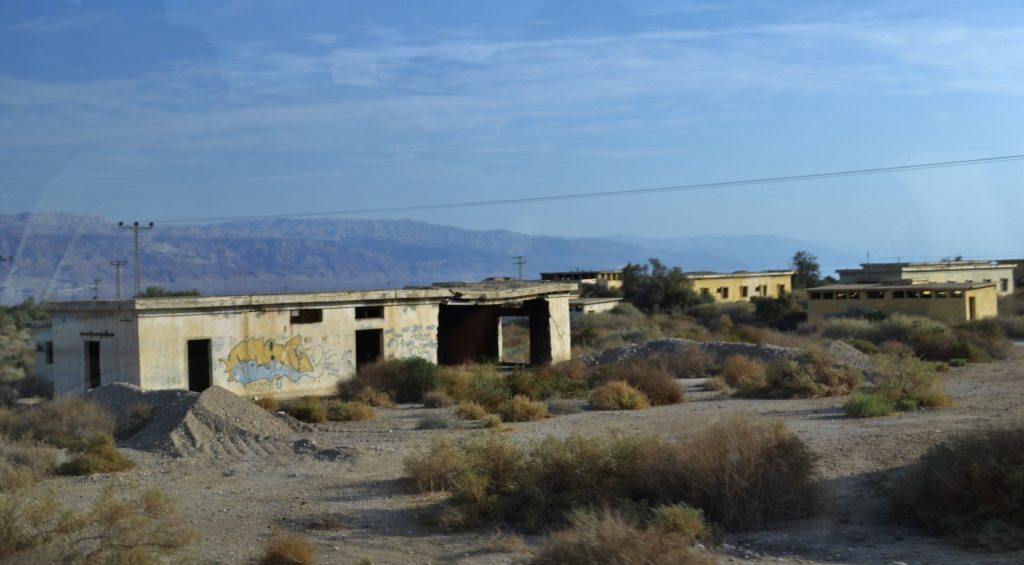
The next afternoon I had the opportunity once again for a “swim” in the Dead Sea as I had arrived at Kalia Beach in Kalya. A touristy spot along the northern coast, several buildings lay abandoned before reaching the entrance. Once a marshland, this housing complex was built to house employees of the Palestine Potash Company in the 1920s. Potash is short for potassium chloride which is medicinal and used in buffers, explosives and fertilizers. The plant was destroyed in 1948 by the Jordanian Legion and was rebuilt by the Israelis in 1950. Derived from kalium, the Latin word for potassium, the name Kalya refers to the abundance of this chemical found within the region.
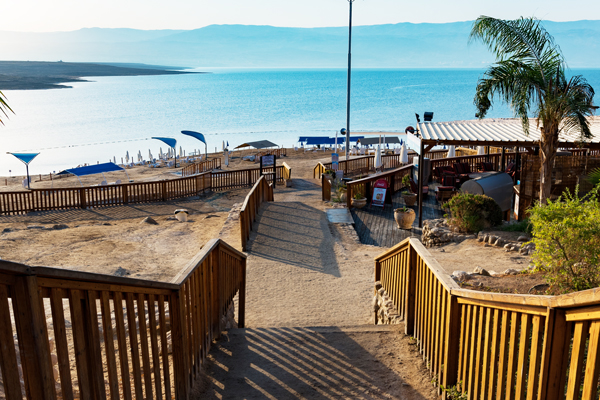
There is a small charge to enter the Dead Sea from the Kalia Beach complex which includes a cafeteria, WiFi, souvenir shops to include a cosmetics center, camping area, changing rooms, showers and a restaurant with stunning views. Kalia, an acronym for “Kam Letechia yam Hamelech” translates to “the Dead Sea is Alive”. This beach is one of the few places on the Dead Sea where visitors can cover themselves in the therapeutic mud located on its premises.
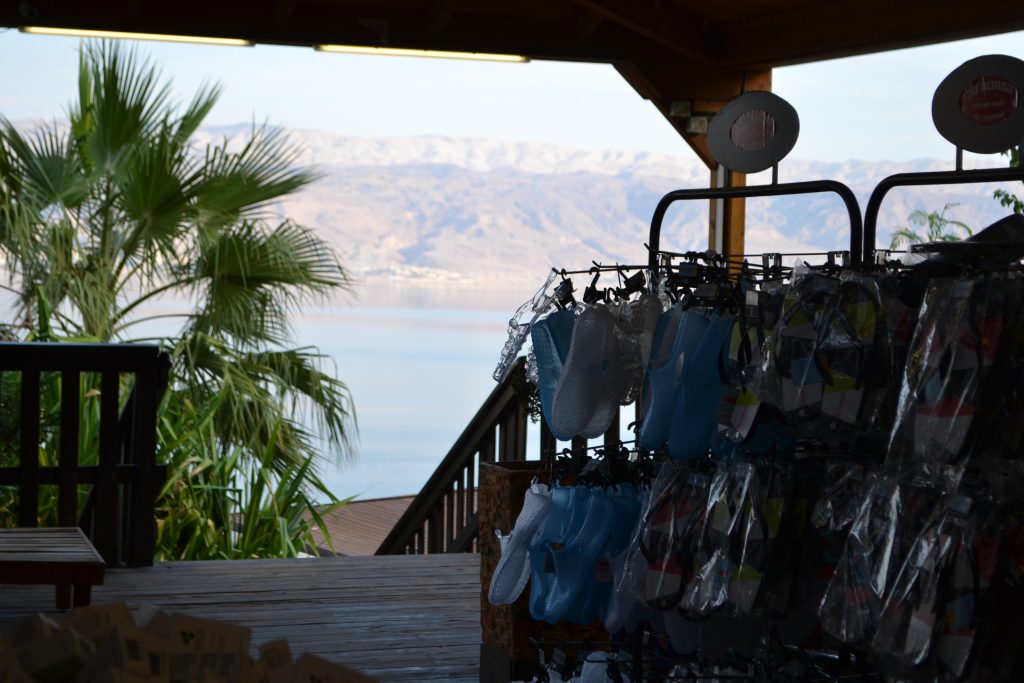
Kalia Beach is known for its Kalia Hotel which was built nearby in the 1940s while Palestine was under British rule. It was here that on November 29, 1947, Ben Gurion learned that the United Nations determined to distribute Palestine into two states, Jewish and Arab.
As the sun began to set towards the Judean Desert, the beautiful glow of the subtle hues was a spectacular close to a glorious experience.
Have you had the opportunity to float in the Dead Sea? Did you enjoy the experience? I would love to hear about your visit to the Dead Sea if you would kindly leave a message in the comments section below. Many thanks for reading about my exciting swim in the Salt Sea and wishing you many Happy Travels!
What to See and What to Do:
Kalia Beach
Road 90
Dead Sea, Israel 9066600
Telephone: 972 2 994 2391
- Admission Fee: Adult: 59 Israeli Shekel; Child, student, veteran citizen, disabled person and soldier: 48 Israeli Shekel
- Hours: Summer time: 8: 00-19: 00; Winter time: 8: 00-18: 00; Open all year except Yom Kippur
- Amenities: cafeteria, WiFi, souvenir shops to include a cosmetics center, camping area, changing rooms, showers and a restaurant with stunning views
- Scenic View: The view of the Dead Sea from the restaurant
- Length of Visit: 1 – 2 hours
- Tips for Your Visit: Wear something on your feet to avoid cuts from the salt bottom. It is best not to shave within 3 – 4 days of entering the Dead Sea. Open wounds may cause pain due to the concentration of salt. If you are not overweight, you may roll over onto your stomach in the water. You can paddle around but you should not attempt to swim. Never allow the water to touch your lips, nose, ears and especially your eyes. If you get Dead Sea water in your eyes, have a friend pour fresh water into your eyes immediately. Some hotels have an eyewash nearby. Be especially careful if the weather is windy as currents can carry you out farther. Do not attempt to enter the Dead Sea while intoxicated. Don’t drink the water as it may cause dehydration and keep an eye on your belongings as petty theft is a possibility.
Where to Stay:
The Kalia Kibbutz Hotel
Kalya, Israel
Telephone: 972 50 402 2232
Where to Eat:
Kalia Beach Cafeteria offers a wide selection of salads, sandwiches and local cuisine.